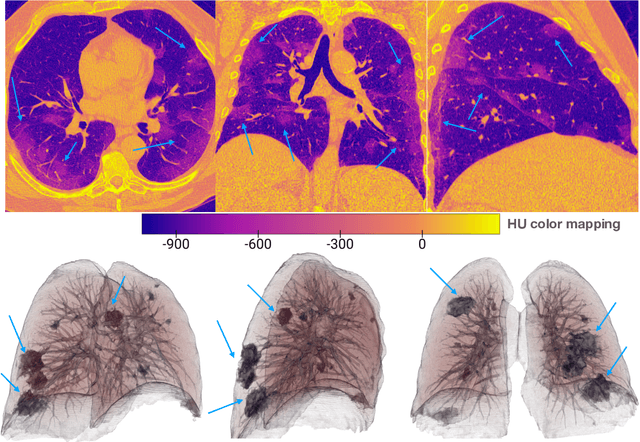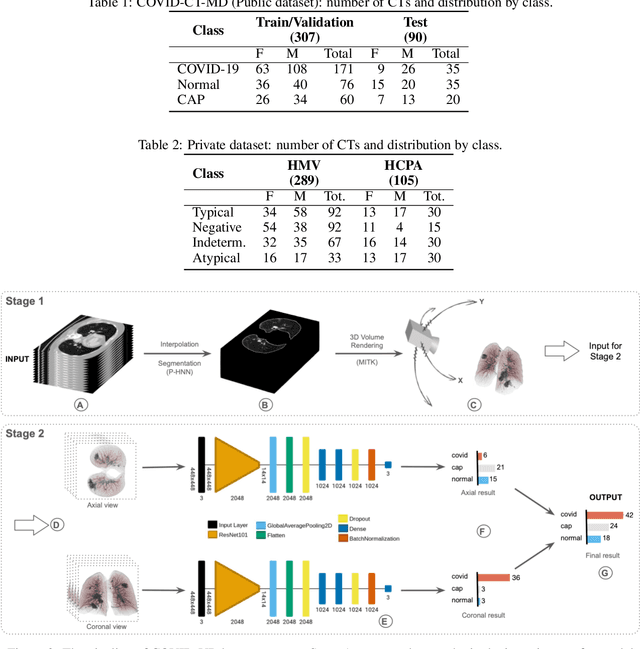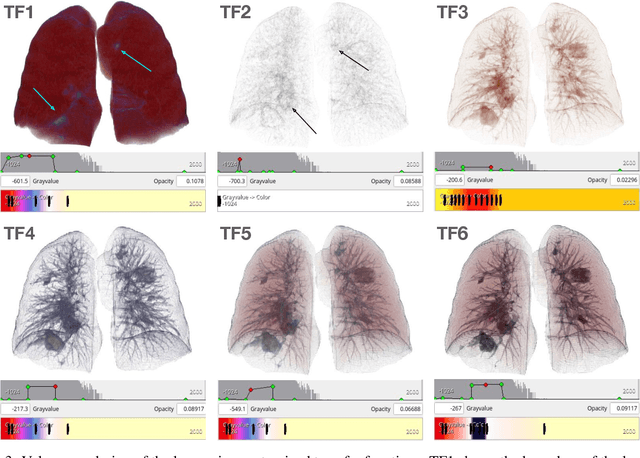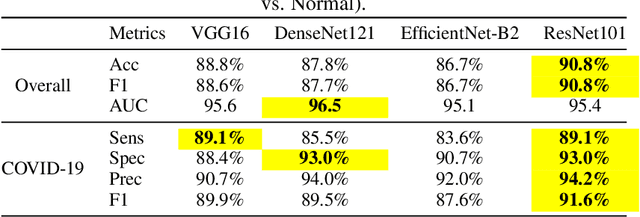João L. D. Comba
COVID-VR: A Deep Learning COVID-19 Classification Model Using Volume-Rendered Computer Tomography
Aug 02, 2023



Abstract:The COVID-19 pandemic presented numerous challenges to healthcare systems worldwide. Given that lung infections are prevalent among COVID-19 patients, chest Computer Tomography (CT) scans have frequently been utilized as an alternative method for identifying COVID-19 conditions and various other types of pulmonary diseases. Deep learning architectures have emerged to automate the identification of pulmonary disease types by leveraging CT scan slices as inputs for classification models. This paper introduces COVID-VR, a novel approach for classifying pulmonary diseases based on volume rendering images of the lungs captured from multiple angles, thereby providing a comprehensive view of the entire lung in each image. To assess the effectiveness of our proposal, we compared it against competing strategies utilizing both private data obtained from partner hospitals and a publicly available dataset. The results demonstrate that our approach effectively identifies pulmonary lesions and performs competitively when compared to slice-based methods.
CNN Filter Learning from Drawn Markers for the Detection of Suggestive Signs of COVID-19 in CT Images
Nov 16, 2021



Abstract:Early detection of COVID-19 is vital to control its spread. Deep learning methods have been presented to detect suggestive signs of COVID-19 from chest CT images. However, due to the novelty of the disease, annotated volumetric data are scarce. Here we propose a method that does not require either large annotated datasets or backpropagation to estimate the filters of a convolutional neural network (CNN). For a few CT images, the user draws markers at representative normal and abnormal regions. The method generates a feature extractor composed of a sequence of convolutional layers, whose kernels are specialized in enhancing regions similar to the marked ones, and the decision layer of our CNN is a support vector machine. As we have no control over the CT image acquisition, we also propose an intensity standardization approach. Our method can achieve mean accuracy and kappa values of $0.97$ and $0.93$, respectively, on a dataset with 117 CT images extracted from different sites, surpassing its counterpart in all scenarios.
 Add to Chrome
Add to Chrome Add to Firefox
Add to Firefox Add to Edge
Add to Edge